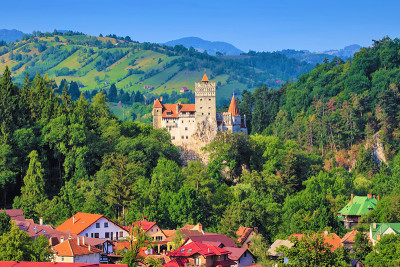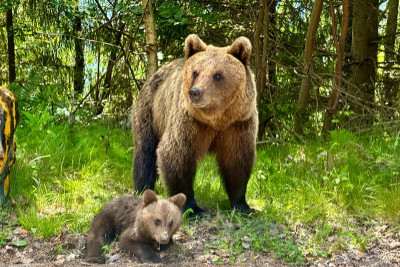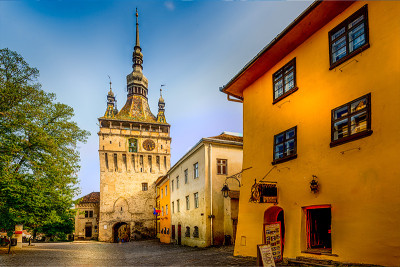Today we will discuss Baile Herculane and the sights we can visit. The resort of Baile Herculane is full of history and rich in thermal springs and mountain landscapes.
Crossed by the Cerna river and surrounded by the Mehedinti and Cerna mountains, the Baile Herculane resort has a history of centuries. The bases of the resort were laid in 102 BC by the Emperor Traian, and the documentary attestation of the Baile Herculane dates back to 153 BC.
What Do We Visit In Baile Herculane Resort?
At Baile Herculane, there are a lot of tourist objectives that we can visit, such as mineral water springs, hot springs, ancient hotels, heritage buildings, imperial baths, exclusive villas, churches and many more.
The Cerna River
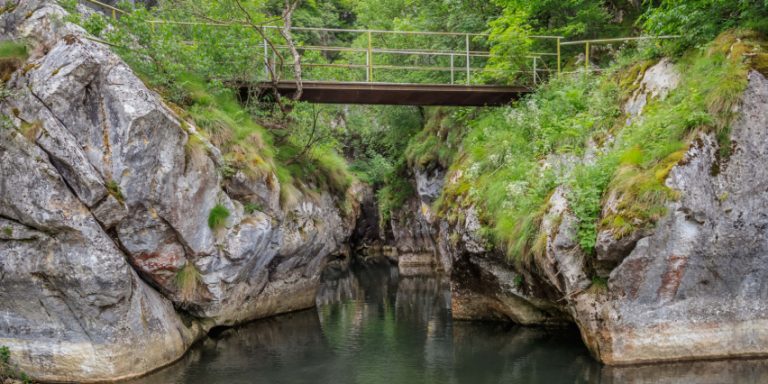
The Cerna River crosses Baile Herculane and offers spectacular scenery to the resort. The Romans Tierna named the river Cerna, then Dierna, and after the arrival of the Slavs, it got the name of today. Several bridges are built over the Cerna river in the resort of Baile Herculane, which offers you breathtaking views.
The mineral waters of the resort of Baile Herculane area have constant flows, and there are thermal waters with temperatures of 40-60 degrees C, sulfur, chloride, sodium, calcium, etc. They have determined since the Roman times the establishment of the resort of Baile Herculane.
Hercules Square
In this market you will discover some essential buildings for the resort and which are authentic architectural monuments of the 19th-20th centuries: The Apollo Bath, the Hebe Bath, Danube Hotel, Apollo Hotel, Venus Hotel (built-in 1838), Dacia Hotel (integrated 1906), the Roman Catholic Church (chapel) and the statue of Hercules, the symbol of the resort of Baile Herculane, being localised in the center of the resort.
Some of these buildings are under construction; others are undergoing renovation. It’s a perfect area for a stroll. In the market, there is a souvenir shop where you can buy a magnet or another souvenir about Baile Herculane.
Statue Of Hercules
The symbol of the resort of Baile Herculane is represented by the Statue of Hercules! It was cast in bronze in 1847 by the Austrian masters Ramelmayer and Glantz. The statue depicts the god Hercules wearing on the shoulder standing the skin of the lion of Nemea and a bite.
The statue of Hercules was installed in place of the red marble fountain that was in the center of the resort of Baile Herculane. Archduke Heiress Carol of Austria donated it to officers and soldiers guarding the Austro-Hungarian Empire border.
The Casino
The Casino was built in the 19th century and was considered in the past as being the most popular casino in the south-east part of Europe. The building is an architectural jewel of the Austrian Baroque style. The place was preferred by the imperial aristocracy of those times playing roulette or other gambling. Here were organized balls and gentlemen invited the ladies to the waltz.
The area is a collection of historical monuments: the casino, the park in front of the casino and a bandstand. The casino building had a showroom, a restaurant, a bazaar, and a terrace. The casino was purchased in 2009 by a local millionaire and is currently undergoing renovation.
Near the stairs of the Casino is a rare species of Sequoia Gigantea, planted in 1864. Declared a monument of nature, the tree is 30 meters high and has a diameter of 1.50 meters. The casino area is perfect for a stroll.
Villa Elisabeta
Villa Elisabeta was built in the 19th century, in 1875, in the Rococo architectural style. In the spring of 1887, Empress Elizabeth of the Habsburg Empire spent a few days in this villa, falling in love with the beauty of these places. It is said that there was a crucial meeting of Empress Sissi with Queen Elizabeth I of Romania. Currently, the villa represents the Baile Herculane’s Culture House.
The Austrian Imperial Baths
Also known as Neptune Baths, they were built between 1883 – 1886 following the plans of the architect Ignac Alpar. They were considered the most modern spa buildings in Europe at that period. There were 32 cabins and two pools built of red marble. Here was the spa care of the emperors and kings of Austria. The Austrian Imperial Baths are opposite the Casino.
Queen Omphala – Hercules’ Lover
On the Stone Bridge, there is a covered corridor that facilitates pedestrian access between Franz Iosif Hotel and Hebe Bath. The hall has a length of 2.50 meters. Above the hallway, at the end of the Hebe Bath, stands a marble statue, representing Omphala, the queen of Lydia, to which Hercules served three years. Hercules had a son with Omphala, named Lamus.
The Stone Bridge
The Stone Bridge was built in the 19th century too, in 1865, which is localized at the southern end of Hercules Square. It connects the architectural ensemble Hercules Square and the architectural ensemble Traian Hotel – Casino – Decebal Hotel.
The total length of the bridge is 36 meters, with a two-pillar structure. The full width of the deck is 10 meters.
The Red Bridge
The Red Bridge can be seen over the Cerna River, being a perfect place for lovers. This walkway with metal railings painted in red facilitates direct access to the new neighborhood built around the Vicol Park. Near the bridge, you can admire an objective worth admiring in this neighborhood: Villa Livia.
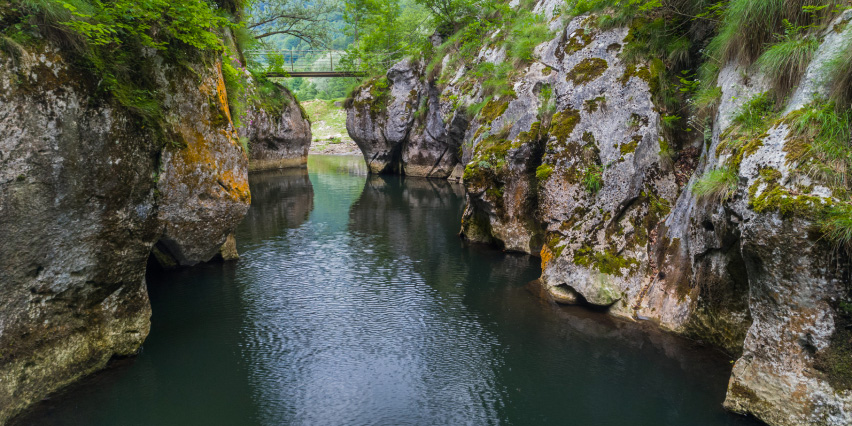
 ES
ES
 IT
IT
 DE
DE
 FR
FR
